iPhone 14 series: design, specifications, price and more

The iPhone 14 lineup has been announced. The lineup consists of four devices: iPhone 14, iPhone 14 Plus, iPhone 14 Pro, and iPhone 14 Pro Max. Finally, we say goodbye to the notch in the 14 Pro series, which Apple first introduced with the iPhone X in 2017.
The notch has been replaced by a pill-shaped cutout that houses the camera and Face-ID sensors, which Apple calls Dynamic Island. Also, the iPhone mini era is finally ending and the iPhone 13 mini is the last mini size iPhone you can get. Let’s take a look at each of the iPhones released at the Apple Far Out event on September 7, 2022.
iPhone 14 and iPhone 14 Plus

Minor sales numbers ended the iPhone mini line. Compared to the regular 6.1-inch iPhone 12 and 13, the mini iPhone 12 and 13 had very low sales figures. And because people prefer bigger phones, Apple introduced the 6.7-inch iPhone 14 Plus alongside the 6.1-inch iPhone 14.
However, aside from the larger size of the iPhone 14 Plus, the iPhone 14 has additional upgrades over the iPhone 13. Keep them close together and you won’t be able to tell them apart.
Assembly and design of the iPhone 14 and 14 Plus
The iPhone 14 has a 6.1-inch display, while the iPhone 14 Plus has a 6.7-inch display. Both models have ceramic privacy glass on the front and back and are made from aerospace grade aluminum. iPhones are protected from dust and water according to the IP68 standard.
Apart from these changes, in terms of design, everything remains the same. Notch of the same size; the camera module is the same size. Camera alignment stays diagonal and so on. Even though the processor on the iPhone 14 is an A15 Bionic SoC, performance has improved.
iPhone 14 and 14 Plus Performance
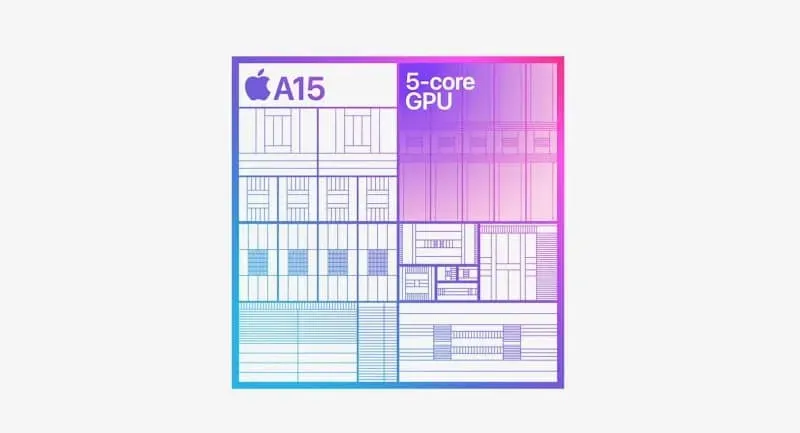
While the iPhone 14 has the tried and tested previous generation A15 Bionic SoC, this is the processor found in the iPhone 13 Pro and not the standard 13. This A15 processor has 5 GPU cores that are 18% faster and provide smoother graphics when heavy workloads. like games compared to the standard iPhone 13.
A15 Bionic has a 6 core processor with 2 high performance and 4 efficient cores. To push the limits of machine learning, it has a 16-core neural engine. The same image signal processor hasn’t changed, but it lets you take better photos thanks to the new camera sensors on iPhone 14.
Camera improvements in iPhone 14 and 14 Plus

The main sensor on the standard iPhone 14 and 14 Plus has been upgraded to a larger 12MP sensor with larger 1.9µm (micron) pixels at f/1.5 aperture while retaining sensor-shift OIS capabilities. A faster aperture reduces motion blur and preserves detail.
Apple claims a 49% improvement in low light, and Night Mode exposure is now 2x faster than its predecessor. The front camera has been upgraded to a 12-megapixel true depth sensor with f/1.9 aperture. Again, Apple claims a 38% increase in low-light performance over its predecessor.
Aside from the hardware upgrades, we’re also seeing autofocus capabilities in the front camera for the first time. Combined with the capabilities of the True Depth Sensor, it can focus faster even in low light conditions.
The Photonic Engine is a new feature introduced in iPhone 14 that applies deep fusion to uncompressed images, helping to retain more information and detail. All camera sensors on iPhone 14 can capture 2X better low-light images on all 3 cameras.
We know that the iPhone takes better quality videos. But there’s always room for improvement, which is why Apple introduced Action mode. It eliminates the need to carry a gimbal, delivers smooth and stable video, and supports Dolby Vision HDR.
No SIM tray on iPhone 14 and 14 Plus
Yes, you read it right. All iPhone 14 series models will no longer have a physical SIM slot. This only applies to iPhones sold in the US. This is a useful feature to improve the security of your iPhone because no one can remove the SIM card if your iPhone is lost or stolen.
In terms of safety features, we also have crash detection thanks to the new high dynamic range gyroscope and dual-core accelerometer, which can detect 256G and provide emergency services automatically.
Another revolutionary safety feature is the emergency SOS call via satellite. This feature shows you where to point your iPhone to establish a satellite connection and stay connected while the satellite moves.
iPhone 14 and 14 Plus colors and prices

iPhone 14 and 14 Plus are available in 5 color options: Blue, Purple, Midnight, Starlight, and PRODUCT Red. The iPhone 14 starts at $799 and the iPhone 14 Plus starts at $899.
The devices are available for pre-order starting September 9th. The iPhone 14 will be available on September 16th and the iPhone 14 Plus on October 7th.
iPhone 14 Pro and 14 Pro Max
Apple has finally stepped back from the notch after 5 long years. The iPhone 14 Pro and 14 Pro Max now house the camera and Face-ID sensors in a pill-shaped cutout that Apple calls Dynamic Island. Let’s dive in and see what’s new in the iPhone 14 Pro series.
iPhone 14 Pro and 14 Pro Max build and design
The iPhone 14 Pro has a 6.1-inch display, while the 14 Pro Max has a 6.7-inch display. The display and back are protected by a ceramic screen, while the bezel is made from surgical grade stainless steel. iPhones are protected from dust and water according to the IP68 standard.
The bezels on the iPhone 14 Pro and 14 Pro Max are thinner and have more active areas. To bring the iPhone display to the same level as the Pro Display XDR, it delivers HDR peak brightness of 1600 nits. To push the boundaries of the display even further, it can reach 2000 nits of brightness outdoors.
The Always on Display feature has finally made its way to the iPhone. It is available on iPhone 14 Pro models. And since it’s an LTPO panel, it can run at refresh rates as low as 1Hz. The lock screen dims to enable Always On Display and all the information you need is available even if AOD is enabled and the display is dimmed.
Display Island on iPhone 14 Pro and 14 Pro Max
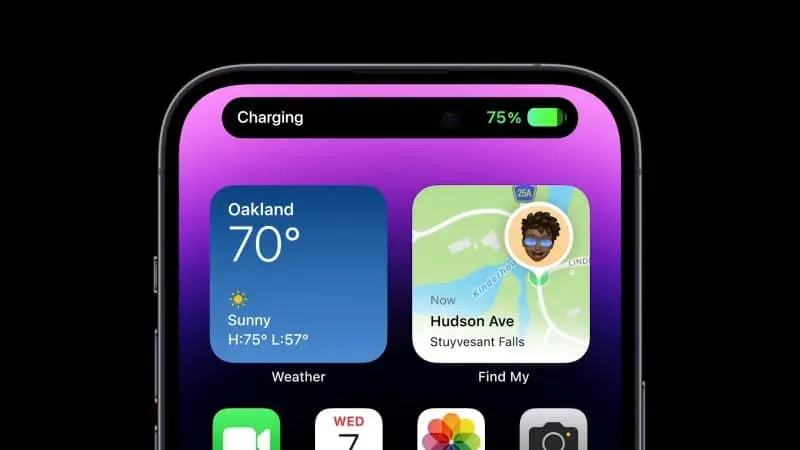
The cutout has been replaced with a Dynamic Island that takes up 30% less footprint as all components have been redesigned to take up less footprint. The goal of Dynamic Island is to blur the line between hardware and software. Another impressive implementation by Apple is placing the proximity sensor behind the display.
Dynamic Island is a highly adaptive space that seamlessly adapts to unique animations and transitions. It displays a lot of information. Whenever you receive notifications and alerts, it expands to notify you.
For example, if you connect your AirPods to your iPhone, Dynamic Island will expand and confirm that your AirPods are connected. There are several such warnings, and they have a unique design and personality.
Because Dynamic Island is interactive, you can press and hold to open more options, or tap on it to return to the app. This is especially useful when making calls, as you can click on it and expand it to show all the options.
Live Activity, a feature introduced in iOS 16, works seamlessly when integrated with Dynamic Island.
iPhone 14 Pro and 14 Pro Max Performance
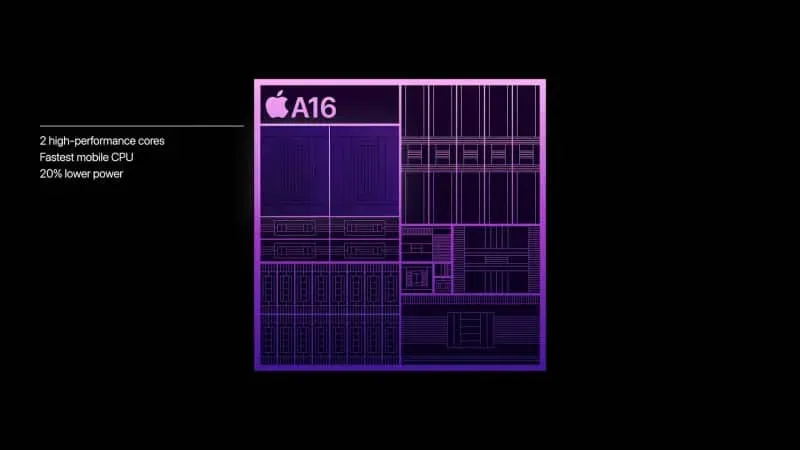
SoC A16 Bionic works on iPhone 14 Pro and 14 Pro Max. The chip focuses on energy efficiency, display and camera. It’s built on a 4nm process and has 16 billion transistors, more than ever in an iPhone.
Apple claims the A16 Bionic SoC is the fastest processor for smartphones. But besides being built on a 4nm process, the A16 Bionic has 6 CPU cores with 2 high-performance and 4 high-performance cores while consuming 20% less power than the A15 Bionic SoC.
The Neural Engine has 16 cores capable of performing 17 trillion operations per second. How can we forget about a 5-core GPU that provides 50% more memory bandwidth for graphics-intensive games?
The new display engine on the A16 Bionic SoC enables a 1Hz refresh rate, constant display, high peak brightness, etc. It also helps make animations and transitions in Dynamic Island smoother.
The CPU, GPU, Neural Engine and Image Signal Processor work in unison, performing up to 4 trillion transactions for each photo. The ISP is also designed to support next-generation technologies that power the most powerful Pro camera system on the iPhone.
Camera upgrade to iPhone 14 Pro and 14 Pro Max
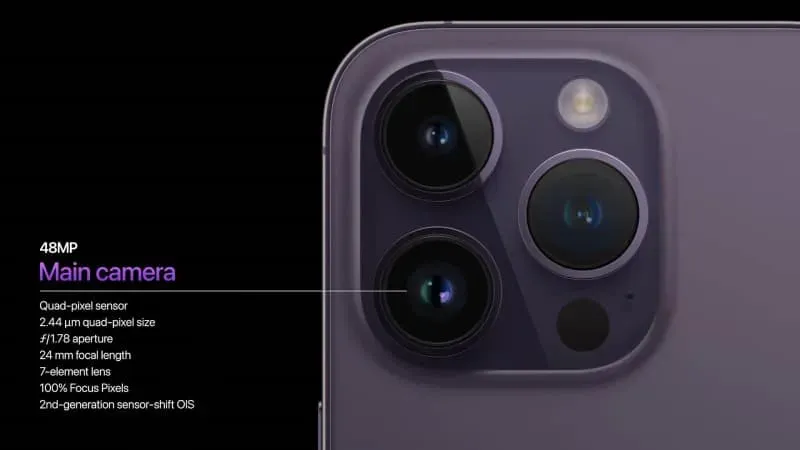
In 2015, Apple switched from 8-megapixel sensors to 12-megapixel sensors. Since then, all iPhones have been equipped with a 12-megapixel sensor, but that has changed with the iPhone 14 Pro line. We hope to see a significant leap forward in photography and videography with the introduction of a 48-megapixel camera with a quad-pixel sensor.
The 48MP sensor has an f/1.78 aperture and a 2.44µm (micron) four-pixel size. It also features a second generation of sensor-shift optical stabilization and uses the popular 24mm focal length known for its versatility.
Quad pixel technology is a pixel binning process in which four pixels are grouped into one large four pixel. Normal captured images will be 12MP; to shoot at 48MP, you have to resort to ProRAW. Professionals prefer to shoot in RAW format as they can modify images without losing detail.
The 48-megapixel sensor also adds 2x zoom capability without losing quality. This is achieved by combining the pixels of a 48MP sensor and using a 12MP combined sensor to capture 2x optical zoom image and 4K video. It also helps to make wonderful portrait images.
The ultra-wide camera has also been upgraded to a new 12-megapixel f/2.2 sensor with a 1.4 µm (micron) pixel size. It delivers up to 3x better image quality in low light and a significant improvement in macro photography as the lens is sharper and captures more detail.
The flash has been overhauled and works like an adaptive flash depending on the focal length of the image being shot. Now we have an array of 9 LEDs, and the program controls the shape and intensity of the flash.
Cinematic Mode has also received an update where it supports 4K video at up to 30fps, 24fps.
iPhone 14 Pro and 14 Pro Max colors and prices
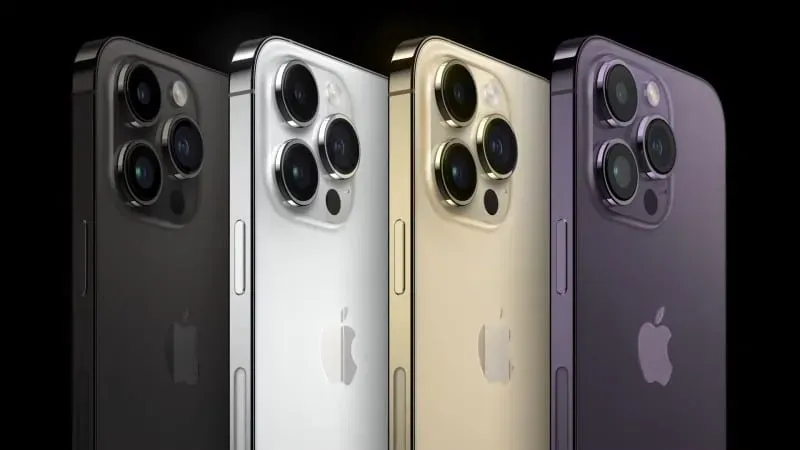
In addition to the features listed above, the iPhone 14 Pro line also has the features of the iPhone 14 line. Crash detection, SOS emergency call via satellite, eSIM functions, etc. are available on the iPhone 14 Pro line.
Apple has priced the iPhone 14 Pro at $999 and the iPhone 14 Pro Max at $1,099. It is available in four color options: Gold, Silver, Space Black and Dark Purple.
Completion…
These are some of the features of the iPhone 14 line. We will update the article as new features of the iPhone 14 line appear. If you have any doubts or want to bring to our attention any important feature that we may have missed, leave a comment below. We will definitely answer your questions or add your points to the article.
Leave a Reply